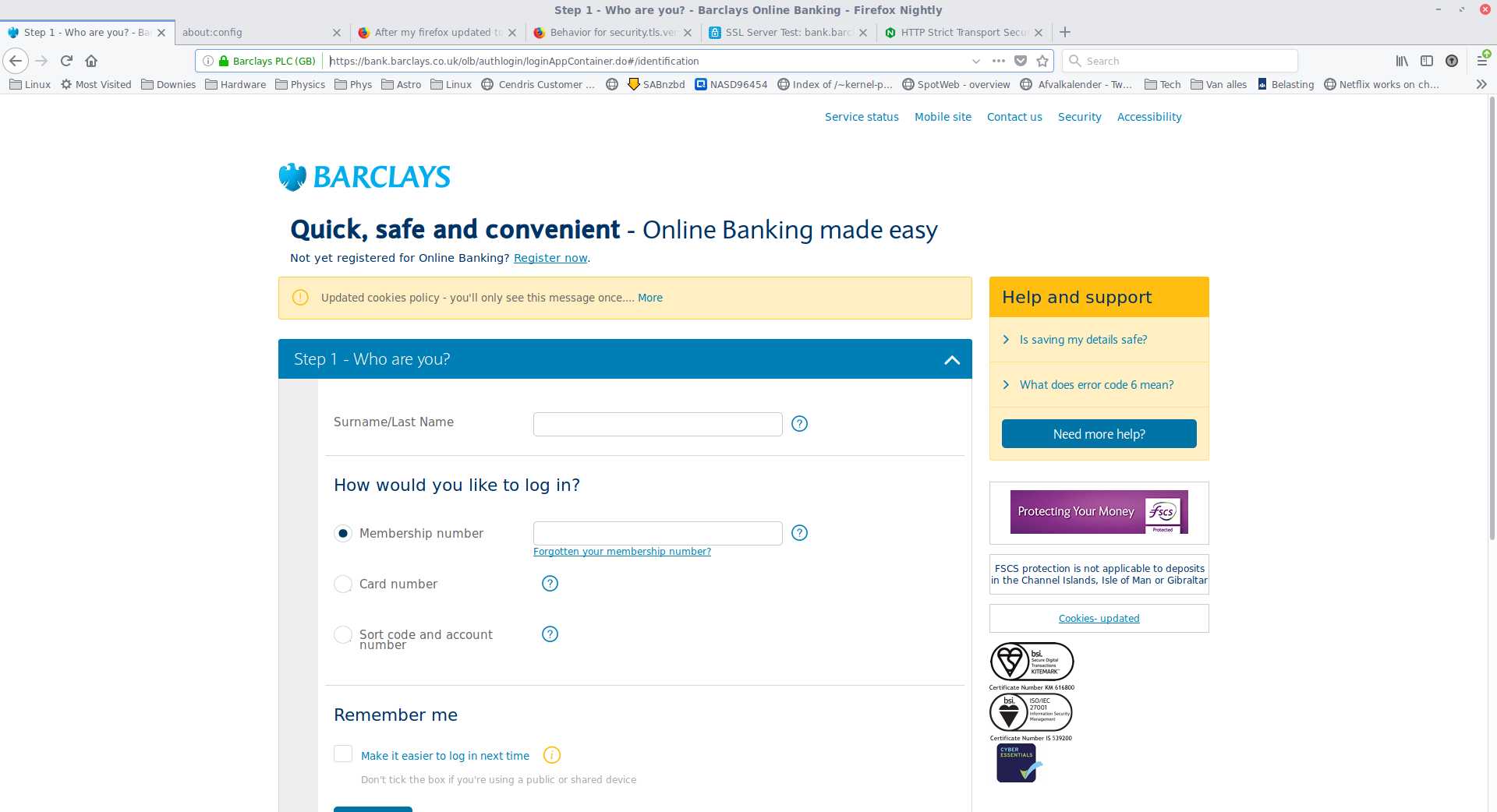bank.barclays.co.uk. is a CNAME to bank.glbaa.barclays.com.
The nameservers of bank.glbaa.barclays.com. can only be discovered when following delegations since they appear to be quite broken (i.e. don't respond to anything else besides A and AAAA queries and respond quite badly to different EDNS0 options as well.
;; AUTHORITY SECTION:
glbaa.barclays.com. 900 IN NS ns22.barclays.net.
glbaa.barclays.com. 900 IN NS ns21.barclays.com.
glbaa.barclays.com. 900 IN NS ns24.barclays.net.
glbaa.barclays.com. 900 IN NS ns23.barclays.com.
;; ADDITIONAL SECTION:
ns24.barclays.net. 600 IN A 157.83.126.246
ns23.barclays.com. 900 IN A 157.83.126.245
ns21.barclays.com. 900 IN A 157.83.102.245
ns22.barclays.net. 600 IN A 157.83.102.246For Stubby, as a stub trying to do DNSSEC from the leaf up to the root (instead of an iterative recursive which would iterate from the root down to the leaf) this is (currently) hampering getting the validation chain. A slightly different approach to chasing DNSSEC would overcome this particular problem. Stubby (or the underlying getdns) should query for DS and DNSKEY of the top-level and the second level domain immediately (it already does for the root). Then it would have discovered that barclays.com. is insecure and would have stopped pursuing.
It is also possible to provide negative trust anchor (put this in your trust anchor file:)
glbaa.barclays.com. DNSKEY 257 3 0 Aa==However, this still schedules the DS lookup for glbaa.barclays.com. so you have to wait for the timeout and then you do get the answer (but too late probably). This is a bug which needs to be fixed.
You could also let an unbound forward to stubby, and let unbound do DNSSEC validation and get caching as an extra as well. This setup is quite popular. In theory it should be possible to do this wiring within stubby too (because it has access to libunbound), but that also we still have to make.
 Had to do a refresh twice, due to cookies policy of barclays website.
Had to do a refresh twice, due to cookies policy of barclays website.
 TLS 1.2 also supported according to ssllabs.
TLS 1.2 also supported according to ssllabs. 
Hi, I’m running stubby on Lede/OpenWRT. Once the DNSSEC is enabled in config, I cannot access bank.barclays.co.uk (in web browser or using native Barclays iOS app) anymore. Please advise if there is something needs to be done or that’s a bug? Thanks.